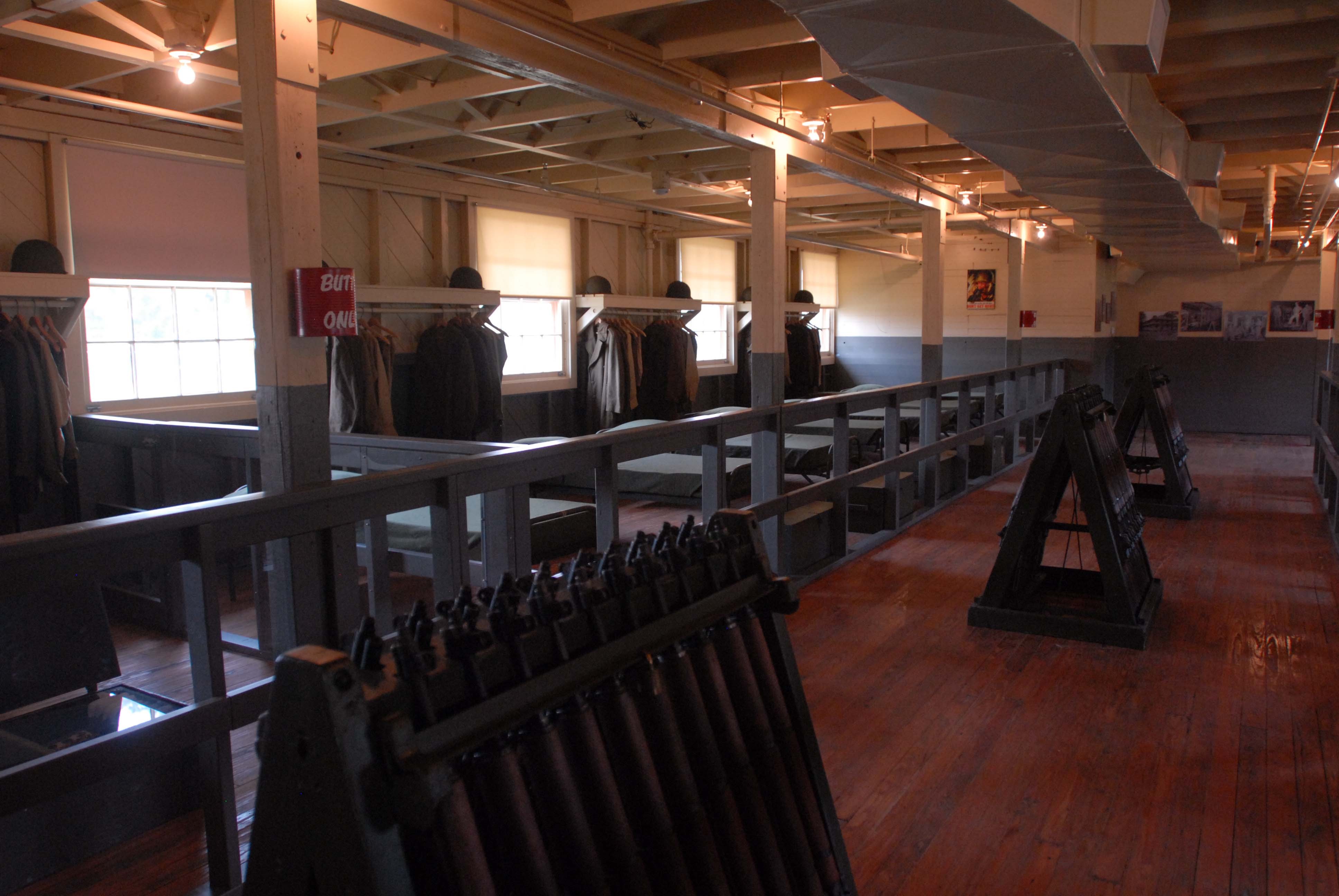FORT BENNING - Just behind the National Infantry Museum, there's a treasure trove of authentic history.
World War II Street features seven buildings constructed during that era that have been preserved and relocated from around Fort Benning.
Though the buildings, most of which were constructed from the Army Quartermaster Corps' 700 series design, were originally meant to last about 15 years, many were still in use well into the latter part of the 20th century.
Robert Hopkins and Robert Knowles, who attended the grand opening Friday with the Atlanta Vietnam Veterans Business Association, said they clearly remember using buildings like the ones on World War II Street while attending basic training in the 1960s.
"We stayed in houses just like this," Hopkins said. "They say it's World War II-era, but we were using buildings like these during Vietnam."
"It's neat to preserve it this way," Knowles said. "It reminds me of Harmony Church when my brother went through basic training here during the Vietnam era."
In each building, visitors are greeted by audio recordings of conversations and sounds they might have heard during World War II. In the mess hall, an NCO argues with a mess sergeant about coffee, and in the Headquarters Building, which served as the headquarters of the 2nd Armored Division after its 1940 activation, an officer gives orders.
Picnic-style wood tables in the mess hall are arranged in rows much as they would have been during World War II, and a metal bar outside the building represents where Soldiers would have been required to do pull-ups.
The barracks building, which served as a temporary home for up to 74 Soldiers during World War II, has weapons, canteens, shovels, knives and other gear issued to Soldiers. Behind rows of beds, Soldiers' uniforms are folded over clothes hangers.
Next to the barracks, the Regimental Chapel houses a miniature model of a little-known Benning landmark that no longer exists. The St. Hubert Shrine was built secretly during the 1920s by PVT Paul Stadnik to give thanks to God for his recovery from an illness. According to a plaque in the chapel, Stadnik sneaked off after normal duty hours to construct the shrine in woods north of what is now 10th Division Road. But, by World War II, the shrine was crumbling because of erosion, and today, only scraps of wood and tin mark its site.
Fans of GEN George S. Patton won't want to miss his sleeping quarters, located near the World War II Street entrance. Formerly Building 3072 in the Sand Hill area, the quarters were not constructed from the 700 series, and no drawings for its construction exist. According the plaque outside the building, Patton used it as a quiet resting place when his operations were running a 24-hour schedule.
If tanks and weapons are more your style, visit the M4A2 Sherman Medium Tank and the M3A1 Stuart Light Tank next to the sleeping quarters. Both tanks were used during World War II, and the M4 series was the most widely produced and used by the Allied forces.
World War II Street is open for tour groups by appointment. For hours, appointments or more information, call 706-545-2958 or visit www.nationalinfantrymuseum.com.


Social Sharing